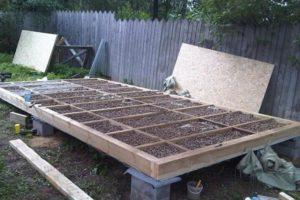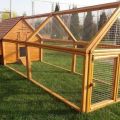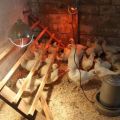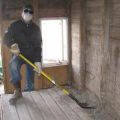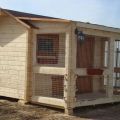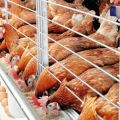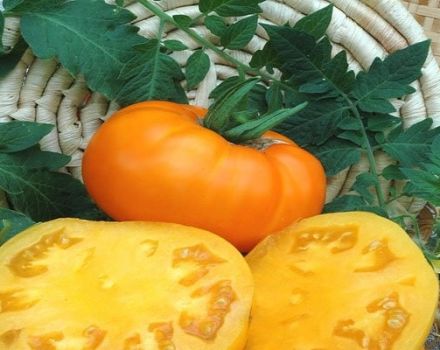The better and cheaper to heat a chicken coop in winter, how to choose a heater
A successful wintering is a guarantee of health and stable egg production of poultry. Preparing the bird's home for the cold period by organizing the heating of the chicken coop correctly in winter and late autumn will be an important step in caring for chickens. What complex of measures is necessary to carry out for the natural insulation of the room, and in which case an additional heating device is required.
Is it possible to do without additional heating?
Sharp temperature fluctuations, unpredictable weather events and prolonged cold periods negatively affect the biorhythms and activity of poultry. In the northern regions with a harsh climate and frosty winters, you cannot do without additional heating of the room. A heater and wall insulation are required.
In the southern regions and regions with a temperate climate, it is enough to properly think over the wall insulation system and provide the bird with high-calorie vitamin nutrition. The chicken coop should be heated according to the thermos principle. The floor, walls and ceiling are laid with insulation, it is necessary to caulk all gaps, joints and cracks, leaving a small hole for ventilation. With such a device, chickens are able to withstand winter with an outside temperature of -12 FROM.
Desired temperature
The optimum temperature inside the chicken coop during winter is + 12 ... + 15 C. Birds in this temperature regime feel comfortable, rush steadily. Decrease in temperature indicators up to +8 is allowed FROM.
On a note! Install a thermometer inside the coop to constantly monitor the indoor temperature.
Achieve winter temperature indicators above +15 With no need, this will lead to an increase in energy consumption, and the chickens will not benefit either. The increase in temperature in the hen house in winter disrupts the life of the bird.
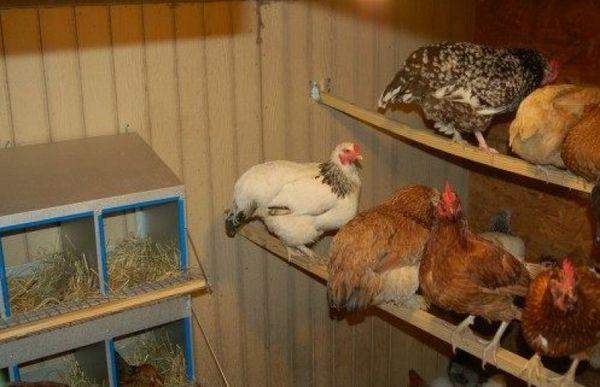
Ways to insulate a chicken coop
There are two ways to create the optimal temperature inside the chicken coop in winter:
- install a heater;
- insulate the walls, floor and ceiling in the room.
In regions with harsh climates, you will need to apply both methods at the same time. The insulation system is best thought out and done during the construction phase of the chicken coop.
Natural insulation
Natural warming is understood as the multilayerness of all surfaces in the hen house. The floor is made double or laid with insulation; an additional layer of expanded clay is often laid under the concrete.
The walls and ceiling are also laid with insulation, all the cracks are sealed. The roof of the chicken coop must be airtight; the presence of drafts inside the building is unacceptable. At the same time, a prerequisite for normal air circulation in the hen house is the presence of ventilation, which must also be insulated.
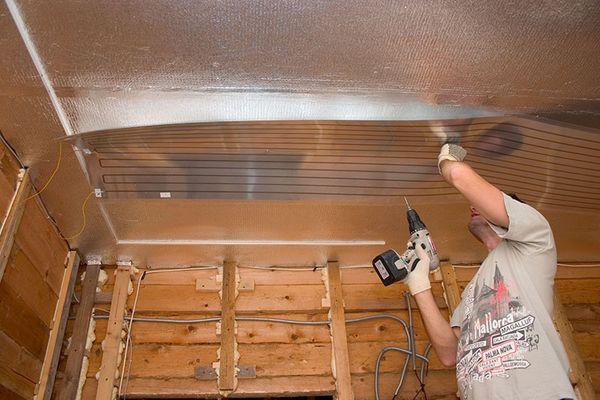
Artificial insulation
Artificial insulation refers to the use of various types of heaters and electrical devices. These include:
- IR lamps;
- IR heaters;
- electric heaters;
- gas heaters;
- stoves;
- water heating.
When using each type of heater, it is necessary to think over a fire safety system and automatic shutdown of devices in case of force majeure. The choice of heating means depends on the technical capabilities of the premises and the goals of the farmer. The most popular are electric heaters and stoves.
Combination of natural and artificial systems
To insulate the chicken coop, a combination of natural and artificial systems is used. Without insulation of walls, ceiling and floor, heat will go outside, the heater will lose up to 50% of its efficiency. In regions with a harsh climate, sources of natural insulation are not enough to maintain a temperature of +15 Indoors.
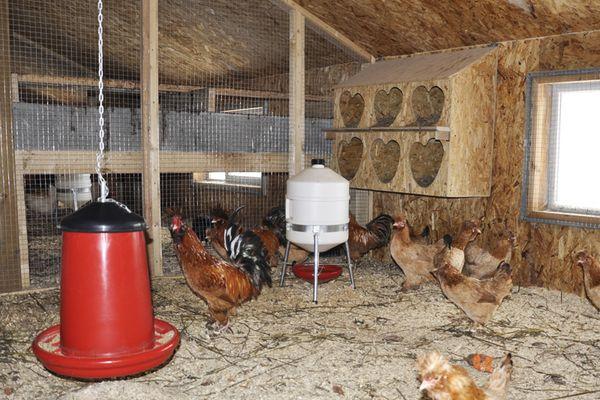
Preparing the chicken coop for insulation
To effectively warm the birds in winter, preparatory work is carried out in the hen house in the summer. First of all, the room is disinfected. As a rule, ultraviolet lamps are used in combination with whitewashing of all surfaces. The birds are moved to another room.
Warming the room
To ensure heat conservation inside the hen house, it is necessary to insulate all surfaces of the room: floor, ceiling and walls. If the old insulation has deteriorated, rotted, it must be completely removed.
Sten
A budget option for insulation material is foam or mineral wool. With their help, the surface of the walls and ceiling is sheathed. The joints between the walls, floor and ceiling are caulked.
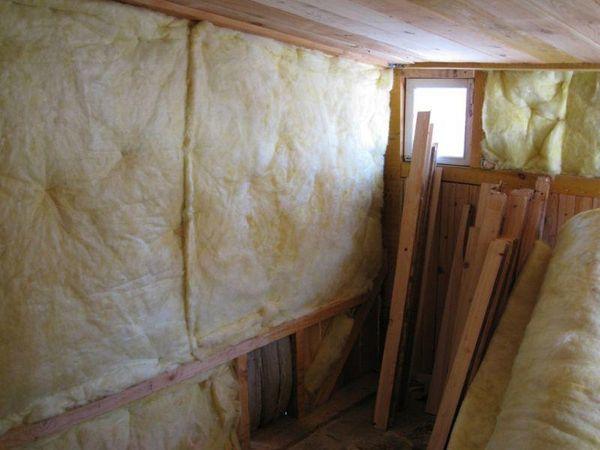
Paul
The natural insulation of the floor inside the hen house is a bedding made of straw, sawdust or other material. At the time of pouring the floor with concrete or cement, it is recommended to lay a layer of expanded clay - this will significantly insulate the surface.
To prevent chickens from freezing their paws in winter, the layer of natural litter is increased to 20 centimeters. Over time, the floor becomes contaminated with chicken droppings, it must be cleaned in a timely manner by adding fresh litter. The ideal material for the litter is sphagnum, which additionally disinfects the surface due to its natural properties.
Ceiling
The ceiling is the main place in the room where heat goes away according to the laws of physics. Mineral wool is often used to insulate the roof in a chicken coop. To prevent it from being affected by moisture, waterproofing is laid. The hemming is usually made of wood. All cracks are covered with polyurethane foam.
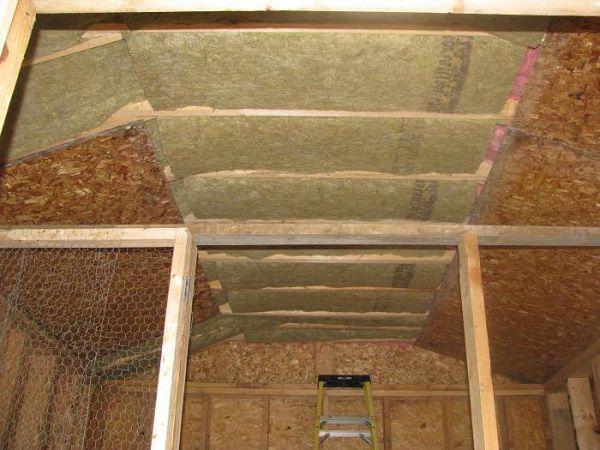
Additional heating
The choice of heaters is quite extensive, the farmer chooses a tool according to his preferences, the need for a thermostat and the technical capabilities of the room.
Electric heaters
There are various types of electric heaters. The main advantage of these devices is the ability to set a certain temperature, which must be maintained. The devices are convenient to use and easy to install.
The disadvantages of such systems include the relative high cost of the required resources in the form of the cost of electricity.
Heater
Type of electric heating device. Often these systems are installed in poultry farms and large farms. The essence of the device lies in the constant circulation of warm air from the heating element using fans. The room heats up quickly, warm air is evenly distributed throughout the space.

The main disadvantage of the air heater is the high cost of installing the heating system, additional ventilation equipment is required, and the noisy operation of the device. When the heater is turned off, the room cools down rapidly.
Oil heater
An electrical appliance that heats a room with a coolant in the form of a special oil. Such heaters are distinguished by a high degree of safety, mobility, lack of noise, efficiency with low power consumption.
The disadvantage of oil systems is the slow and uneven heating of the chicken coop.
Electric convector
The operation of the device is based on air convection. The electric convector draws in cold air from the room, while producing warm air. This creates an uninterrupted air circulation in the chicken coop. The device is easy to operate, it belongs to the class of energy-saving systems, does not dry out the air in the room, and has a low noise level.
For the smooth operation of the device, it is necessary to ensure the stable operation of the power supply. Disadvantage - the room cools down quickly after turning off the device.
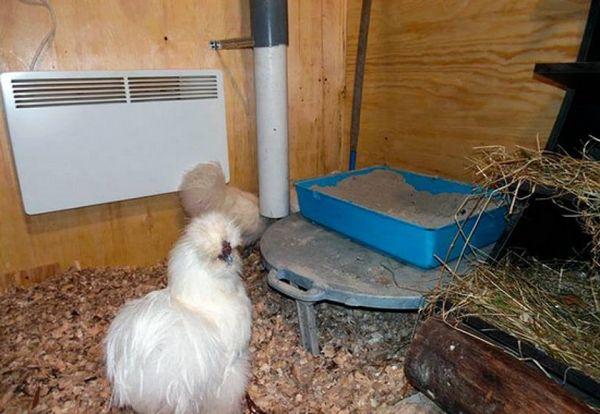
IR heater
The operation of the device is based on the action of electromagnetic infrared radiation on living organisms. The device is not complicated, it is easy to install it indoors. The IR heater works quietly and safely, consumes little energy and does not dry out the air in the room. IR film can be applied to any surface in the required plane.
The disadvantages of the device are possible failures in the biorhythms of birds and animals, the sleep of chickens is disturbed, since the device emits light during operation, besides, the IR heater heats the object, not the room.
Ceramic panel
Based on the principle of operation of an IR heater. For wall or ceiling mounting indoors. Such panels are convenient to use, consume little energy, and are safe for birds and animals.
Other ways without electricity
If the technical ability in the room does not allow electricity to be supplied, then stove, water or gas heating is used.
Using a potbelly stove
Type of stove heating of the chicken coop Potbelly stoves require the installation of a chimney. You can heat the stove with wood, coal or fuel briquettes. All fuels are environmentally friendly and do not emit toxins. Serving a potbelly stove is cheap and not difficult. But the use of stoves in a chicken coop requires compliance with all fire safety standards.
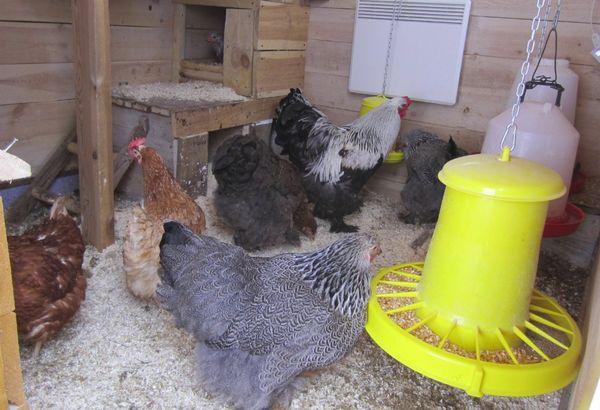
The disadvantages of stove heating include the need for constant tossing of fuel material, the release of an unpleasant odor during fuel combustion.
Heating the chicken coop with gas
One of the most practical, safe and inexpensive heating methods. The gas heating system is based on two possible methods:
- through water pipes;
- using a convector.
Such systems are used in poultry farms and large farms. The coop heats up quickly, the room temperature is kept constant, and there is no unpleasant smell or noise.
Water heating
The heated water gives up its heat to the batteries. Convenient, simple and safe. The room heats up gradually and evenly. Batteries can be made of cast iron, metal, or plastic.
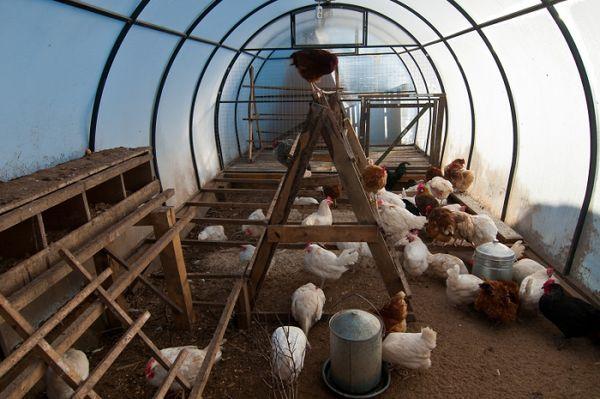
Which heater to choose?
Maintaining the correct temperature in the hen house in winter is a prerequisite for keeping chickens.When choosing a heater, it is necessary to take into account the technical capabilities of the premises, the number of chickens and the ultimate goals of the farmer. Some types of heating systems can be made and installed by hand. The heater is selected according to the following parameters:
- technical ability to install the fuel system;
- the cost of installing and maintaining the device;
- the degree of fire hazard;
- the number of square meters of the room that the device can heat;
- the required ventilation system;
- the presence of a thermostat.
It is important to remember that the effect of the heating device can be achieved only in the case of complete natural warming of the chicken coop. Work on artificial additional insulation is carried out in conjunction with the natural insulation of the room.

